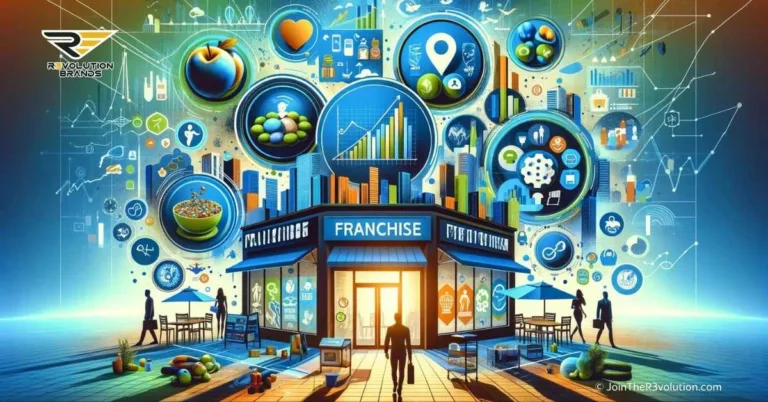Leveraging Big Data and Analytics to Gain Competitive Insights
In today’s data-driven business landscape, leveraging big data and analytics is essential to gain a competitive edge. By harnessing large volumes of data, businesses can pinpoint valuable insights that drive strategic decision-making and boost their competitiveness.
For instance, retail businesses can analyze customer purchase patterns and preferences using advanced analytics tools.
By identifying correlations and trends in the data, they can personalize marketing campaigns and deliver targeted offers to specific customer segments. This data-driven approach increases sales conversion rates and enhances customer satisfaction, ultimately leading to a stronger market position and increased revenue.
Similarly, manufacturing companies can optimize their supply chain by analyzing data from various sources. By understanding patterns in inventory levels, production schedules, and customer demand, they can improve inventory management and reduce costs.
This data-driven approach allows them to make informed decisions about procuring raw materials, optimizing production cycles, and improving logistics efficiency.
Consequently, they can respond swiftly to changes in market demand and gain a competitive advantage by offering faster delivery times and better customer service.
Adopting Artificial Intelligence and Machine Learning to Automate Processes
The adoption of artificial intelligence (AI) and machine learning (ML) technologies has revolutionized the way businesses operate by automating processes that traditionally required human intervention. By leveraging AI and ML algorithms, businesses can automate complex data analysis, detect patterns, and make accurate predictions.
For instance, customer service departments can deploy AI-powered chatbots and virtual assistants to automate routine inquiries and provide faster response times. These intelligent systems can process natural language queries, provide relevant information, and even handle transactions, freeing up human agents to focus on more complex customer issues.
By automating repetitive tasks, businesses can enhance operational efficiency, improve customer experiences, and reduce costs.
AI and ML technologies also find applications in the finance industry. Financial institutions can analyze vast amounts of financial data using AI algorithms to detect fraud and identify investment opportunities.
By automating these processes, businesses can significantly reduce the time and resources required for manual analysis, improving accuracy and security measures.
Building Omnichannel Customer Experiences Across Devices and Platforms
In the digital age, customers expect seamless experiences across multiple devices and platforms. To meet these expectations, businesses are investing in omnichannel strategies that integrate various channels, such as websites, mobile apps, and physical stores.
For example, e-commerce businesses can integrate their online platforms with social media channels to enable customers to purchase products directly from social media posts.
This seamless shopping experience eliminates the need for customers to navigate through multiple platforms, increasing convenience and driving higher conversion rates.
Similarly, retailers can develop mobile apps that provide personalized recommendations and offers based on a customer’s purchase history and preferences. By integrating data from various touchpoints, businesses can deliver cohesive and consistent experiences, enhancing customer engagement, loyalty, and ultimately, revenue.
Moreover, service providers like banks or utility companies can allow customers to start interactions through one channel (e.g., phone call) and seamlessly transition to another (e.g., website) without losing context. This continuity ensures a frictionless experience, reducing customer frustration and improving satisfaction.
Embracing Remote and Hybrid Work Environments
The COVID-19 pandemic has accelerated the adoption of remote and hybrid work environments, and businesses are now recognizing the benefits of these arrangements.
By embracing remote work, companies can tap into talent pools beyond their geographical limitations, enabling them to secure top talent regardless of location. This diversified workforce brings fresh perspectives, innovative ideas, and a diverse range of skills to the table, driving creativity and fostering a culture of inclusion.
Furthermore, remote work provides employees with more flexibility, improves work-life balance, and reduces commuting time and costs. This increased flexibility and improved well-being lead to higher job satisfaction, enhanced productivity, and reduced employee turnover rates.
While remote work offers undeniable benefits, some companies are transitioning to hybrid work models to strike a balance between flexibility and in-person collaboration. This approach allows teams to reap the benefits of both remote work and face-to-face interactions, fostering synergy and building strong working relationships.
To support remote and hybrid work environments, businesses must invest in technology infrastructure, communication tools, and policies that enable seamless collaboration and information sharing.
Focusing on Sustainability and Social Responsibility
As consumer awareness of environmental conservation and social responsibility grows, businesses must prioritize sustainability initiatives to meet demand and gain a competitive advantage. By integrating sustainable practices into their operations, companies can appeal to environmentally conscious consumers and showcase their commitment to ethical business practices.
For instance, consumer goods companies can adopt sustainable packaging materials and reduce waste in their production processes. By doing so, they reduce their environmental impact while appealing to consumers who prioritize eco-friendly products.
Businesses can also implement energy-saving measures to reduce their carbon footprint. Transitioning to renewable energy sources, optimizing energy consumption, and adopting “green” building practices can significantly reduce environmental harm, contribute to a cleaner ecosystem, and align with customers’ sustainability expectations.
In addition to environmental sustainability, companies are increasingly embracing social responsibility. They establish Corporate Social Responsibility (CSR) programs to tackle social issues, support local communities, and promote ethical business practices. By engaging in volunteering activities, making charitable donations, and fostering workforce diversity and inclusion, businesses demonstrate their commitment to making a positive impact beyond their bottom line.
By embracing these trends and implementing practical applications, businesses can stay ahead of the curve and drive growth, efficiency, and innovation. Leveraging big data and analytics, adopting AI and ML technologies, building omnichannel customer experiences, embracing remote and hybrid work environments, and focusing on sustainability and social responsibility are crucial steps in meeting the evolving demands of the marketplace.
Through data-driven decision-making, automation, seamless customer interactions, flexible work environments, and sustainable practices, companies can build strong foundations for success in the digital age while creating a positive impact on society and the environment.
Don’t settle for the status quo. Take your business to the next level with R3volution Brands. Let our team of experts revolutionize your business. Reach out to us today and start your journey towards success.





